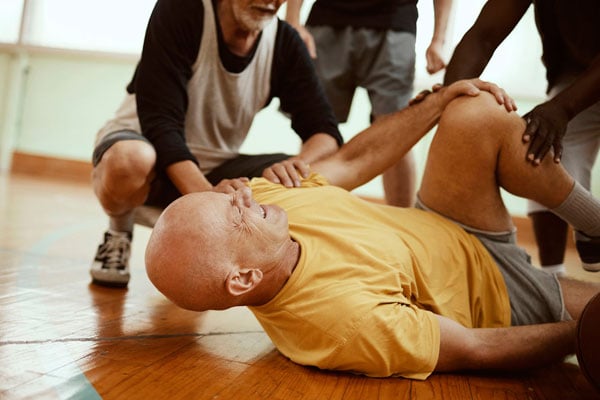Prime
Avoiding falls among older adults

If you have an aging parent, grandparent, or neighbour in your life, helping them reduce their risk of falling is a great way to help them stay healthy and independent as long as possible.
When one falls, the worry of a broken leg is extreme save for a bruise and the like. However, among older adults, a fall is a cause for worry because very many things can arise.
Dr Franklin Wasswa, a general practitioner, says falls may be precipitated by intrinsic or extrinsic factors. “Intrinsic factors are those that have a physiologic origin, while extrinsic factors arise from environmental factors or other hazards. Distinguishing the two is important to finding the best risk and prevention management,” he says.
He shares that falls are common in geriatrics (older adults) than in other populations because the latter have other mechanisms to prevent falls.
Predisposing factors
Dr Wasswa says most locations of falls are in hospitals because the fall victims are already not well. “Low energy is a risk factor for these persons as they are already advanced in age and battling other ailments,” he says.
He adds that the medications such as anti-epileptic drugs also affect one’s balancing system, brain alertness, muscle strength. “All these make them prone to falls as they are not completely in control of their faculties.”
Dr Fiona Mutesi, a general practitioner, says bathrooms are also a tricky place because they are soapy and slippery. “Therefore those without non-slip footwear are prone to falling,” she says.
Ailments are also responsible for causing falls among older adults. Dr Wasswa shares that some of these include diseases that affect balance such as Parkinson’s disease, heart disease that can cause low blood pressure leading to fainting and anemia. “Someone that previously suffered a fracture, has history of stroke, suffers vitamin D deficiency, uses alcohol, was recently hospitalized is prone to falls. Also, females are more likely to get injuries and death from falls than men,” he adds.
Dr Mutesi says while some view these falls as just a risk leading to fractures, disregarding them could lead to irreversible psychological, health and social consequences, with great financial constraints.
Solutions
For one to come up with solutions to these falls, Dr Wasswa says a proper assessment of risks is important to put preventive measures. “This falls under the preventive medicine speciality. 40 per cent of my work involved in making doctor home visits to deliver healthcare to patients (older adults and home bound patients, young or old). While at it, the first thing I do is assess the risk of falls and injury. It may be from a sharp edge of a door, a toy car left in the hallway, water spilled on a tile surface on the walkway, improper or lacking footwear, the vision status of the patient. That is because if you have poor sight, you may miss a step or walk into a wall,” he says.
He adds that when risks are assessed, preventive measures are put in place from an informed point of view. “For example, recently, I visited a home with open rain water draining trenches but the old adult in the home had cataracts, hence visual impairment. I ordered for their covering to ease his movement, advised that the tiles in the home be kept dry and that he had to start wearing good gripping rubber footwear to give him a chance to stay firm on his feet. In the bathroom, which has a bathtub, I advised he uses slippers when showering to prevent slipping and falling.”
Dr Wasswa says preventing falls is important because one might suffer from fallophobia, which reduces their ability to walk. “If an older adult does not move, they will degenerate faster and develop other complications. Therefore, finding physically and psychologically safe ways to keepthem moving is important,” he concludes.
Prevention
Dr Fiona Mutesi, a general practitioner, says other measures that can be implemented include:
● Lighting up hall and walkways so one sees where they are stepping.
● Ensure that furniture is stable enough to support the weight of people leaning. “Older adults will always lean on something because of their advanced age and waning strength. Therefore, stable and strong furniture is a great asset. More to that, repair loose furniture to avoid falls,” she says.
● Also, provide chairs with armrests that extend forward enough to provide leverage when getting up or sitting down. Arrange furnishings so pathways are not obstructed.
● Keep frequently used cabinet items at knee level and install shelves and cupboards at accessible height.
● Place rubber mats on the floor at the sink area and wear rubber soled shoes in the kitchen.
● Place grab bars on the side of bath tubs and toilets.
● Remove locks from bathroom doors or use locks that can be opened from both sides of the door.
● Besides the environment precautions, Dr Mutesi says there is need to review medications, minimising psychoactive medications and reducing the total number of medications.





